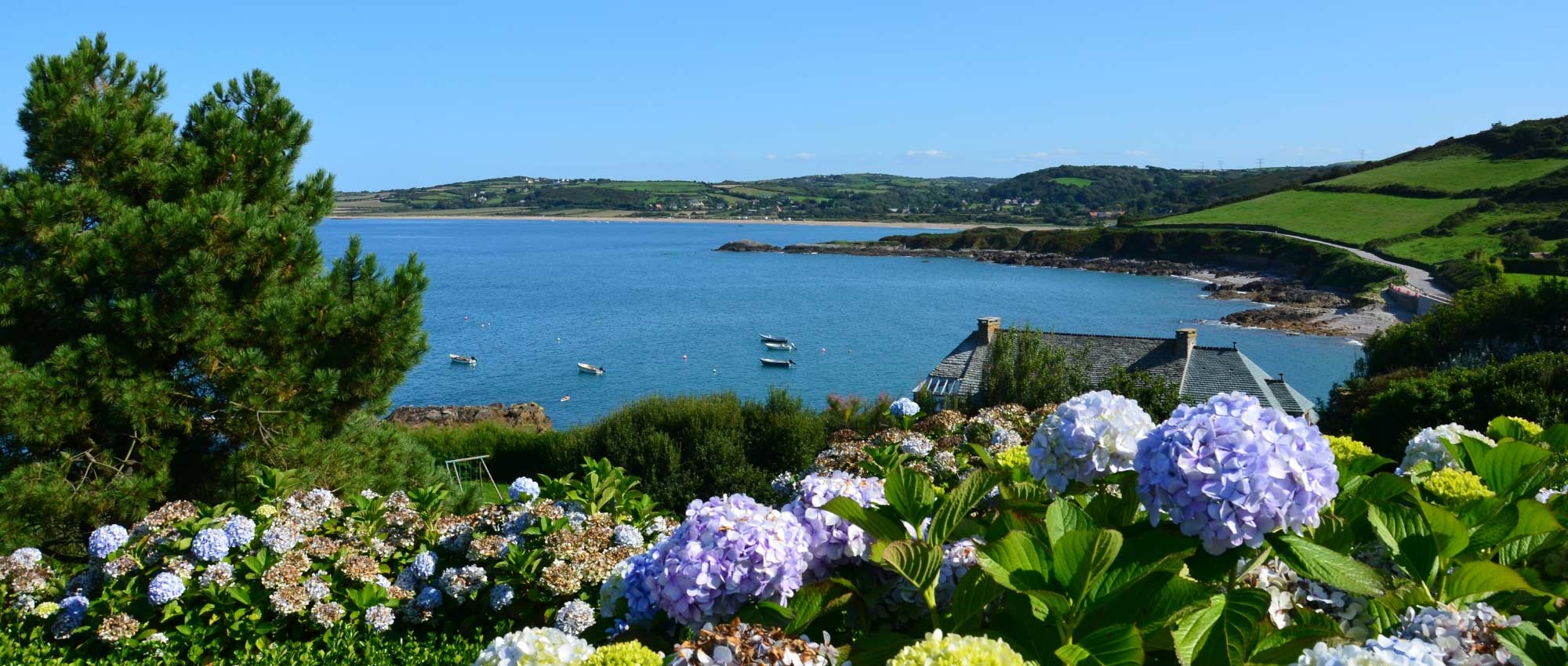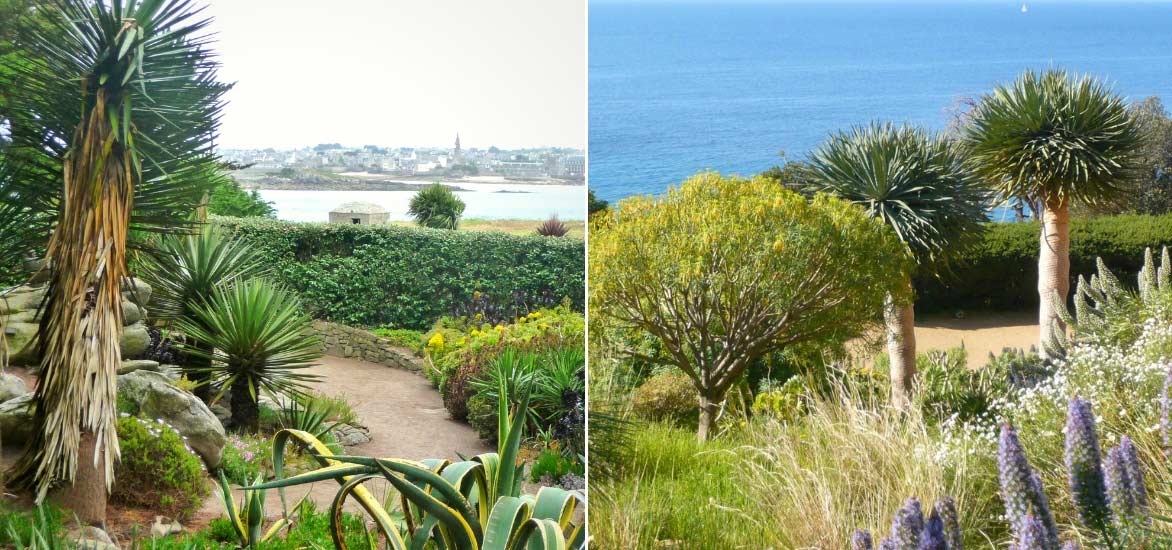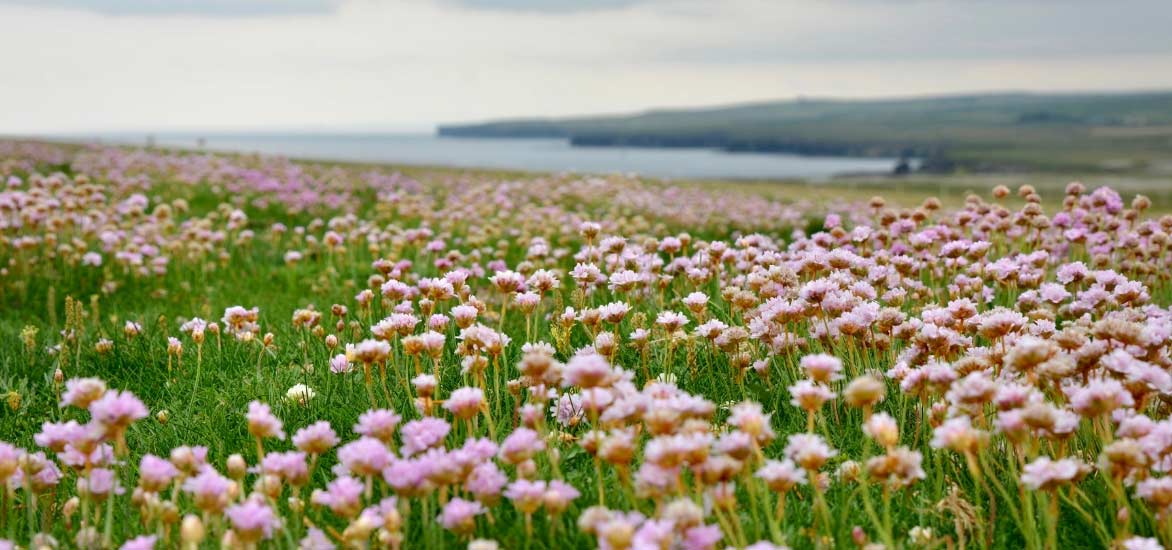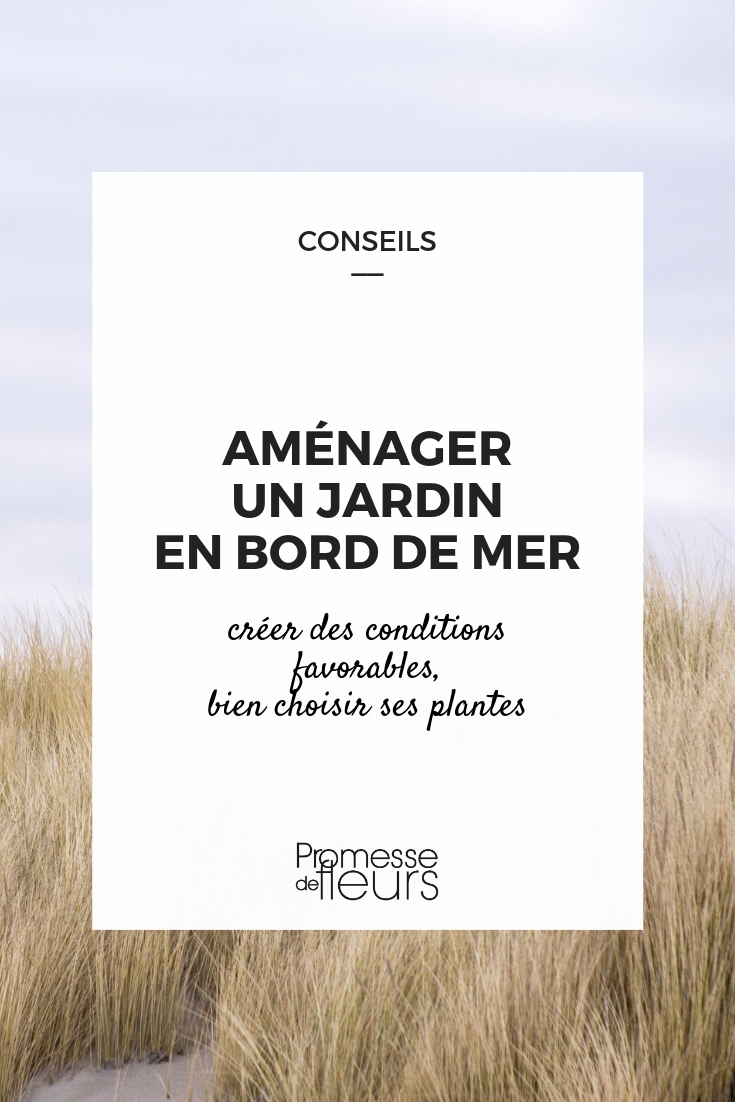
Coastal garden design
All our advice for creating it, choosing plants and looking after it!
Contents
Gardens located by the sea benefit from a superb holiday-like setting, a mild sunny climate with little risk of frost, which allows cultivation of less hardy plants.
However, this type of garden is not so easy to design and maintain because they are subject to natural constraints: winds, sea spray, poor sandy soil, sometimes unstable… It is not surprising that, in nature, coastal flora is specific, with species quite different from those found in other media, as it has adapted to these particular conditions.
To create a garden by the sea, you must face some natural difficulties and constraints posed by the medium. You will then be able to create a superb garden, with unusual, not very hardy plants… a plant paradise with sea view! Discover all our advice to create more favourable conditions, choose the right plants, and maintain a garden by the sea.
Challenges of a coastal garden
- Sea spray: by the sea, wind is laden with salt, which burns foliage and dries out plants.
- Strong winds: on the coast, wind can be quite violent, with gusts and sometimes storms. It can tear foliage from plants, break branches of trees and bushes, and it accelerates drying of soil.
- Soil type: in general, very poor, free-draining soil does not retain water and mineral nutrients well, which percolate away too quickly. Sometimes ground that is too sandy is somewhat unstable and can be moved by wind. You should then plant species that hold it in place with their roots (such as oyat, marram grass). Often soil is shallow, with only a thin layer of earth.
- Regarding structures and garden furniture, sea spray can also damage materials you use, which may corrode. Prefer treated wood, galvanised steel or aluminium.
Alongside these challenges, the seafront also offers advantages for plants! Obviously, climate is generally very mild, so you can afford to grow less hardy plants there that would suffer from cold in other regions. Likewise, light levels and sunshine are greater than elsewhere. Sunlight reflects off the sea, which benefits photosynthesis and plant metabolism. Finally, air is more humid, less dry.
However, it is important to consider your particular geographical situation. Climate differs greatly depending on whether you are on the English Channel, the Atlantic coast or the French Riviera. Temperatures are generally cooler along the North Sea, around Dunkirk, than at the tip of Finistère or on the Basque coast… not to mention the Mediterranean rim, which enjoys a very mild, sunny climate. Rainfall is also higher in Brittany, while the Mediterranean basin is much drier. Likewise, soil type differs: soils are more often acidic in Brittany, whereas they are more often calcareous or neutral on the French Riviera. Before starting to landscape your garden, find out about your climate and the nature of your ground, and make sure to choose plants suited to it!

Two types of coastal gardens: the George Delaselle Garden on Île de Batz, in northern Finistère; and the Jardin des Canaris at Domaine du Rayol, on the French Riviera.
Solutions: create more favourable conditions
- Protect site by sheltering it from wind and sea spray
We recommend using plants to reduce wind speed. The idea is to create a permeable barrier, not solid, as that could accelerate wind by diverting its flow. Create a windbreak hedge to protect more sensitive plants, using for example gorse, oleanders or tamarisks. You can also use reed screens, palisades, open slatted fences or heather screens…
- Improve soil
On the coast, ground is often too free-draining, poor and sandy, or stony. In addition, there is often only a shallow layer of soil. We recommend adding topsoil or garden soil. Also feel free to enrich soil with organic fertilisers (manure, seaweed, guano…) and with well-rotted compost.
- In general, creating rockeries and dry gardens with a mineral-dominated character, is particularly well suited to seaside gardens. They are naturally economical in water and mineral nutrients, and require little maintenance.
Finally, as a rule, in this type of garden people want to preserve a good view of the sea where possible. You can therefore raise certain areas of the garden, and position plants so they do not obstruct the sea view. You can create a pleasant seating area with a bench or outdoor seating from which to enjoy the view. It is also useful to provide some shade, thanks to a pergola, an arbour, or trees and bushes.

Armeria maritima, a small seaside plant that grows naturally on the Atlantic coast
Choosing plants adapted to the seaside
Most often, plants adapted to the seaside naturally have thick, leathery, grey or silvery leaves, sometimes pubescent, with a small lamina. This makes them more resistant to desiccation, limiting water loss and wind effects. Many grow as cushions or quite densely. Lower-growing plants, with a creeping or carpeting habit, suffer less from sea spray, gusts and storms than taller plants.
By the sea, very sandy, wind-exposed soil can also be somewhat unstable. Certain plants will help stabilise ground. Oyat (Ammophila arenaria), for example, thanks to very deep roots, naturally plays this role by binding soil and stabilising dunes. Likewise, ground-cover plants can help hold soil and prevent sand from blowing away.
It’s useful to lay out garden by creating different zones and vegetation levels according to proximity to sea. Plants closest to seafront should be hardiest and lowest. Further back towards house, space becomes more sheltered where one can grow a wider variety of plants.
- Choose plants with a flexible habit, whose branches can bend under wind without breaking.
- Avoid plants with large, broad leaves, as wind can tear them. Prefer those with small, fairly fine leaves.
- We recommend using grasses, as it’s very pleasing to see their delicate foliage sway in sea spray and wind. They will bring movement to garden. Choose, for example, Oyat (Ammophila arenaria), Stipa, fescue, Lagurus ovatus…
- When planting new trees or bushes, choose relatively young plants. That way, they will have time to adapt to these particular conditions and will be less unsettled by this environmental change.
- By the sea, it can be difficult to have a true, attractive short grass meadow, but one can choose alternative plants, such as Phyla nodiflora, a very low, creeping plant with small ovate leaves, or Zoysia tenuifolia, also called Mascarene grass. Also discover Pennisetum clandestinum.
- In general, choose plants drought-tolerant and unfussy about nutrients. They must tolerate soils poor in organic matter.
- One major advantage of seaside gardens is milder climate, allowing to grow more tender plants. So it’s possible to choose more exotic and less hardy plants than in other regions.
- Take inspiration from natural vegetation, found wild at seaside: oyat, Lagurus ovatus, Eryngium maritimum, Armeria maritima… These are obviously best-adapted plants!
→ Discover our selection of plants suited to these conditions in the following articles: best trees for sandy soil, 10 perennial plants ideal for seaside gardens, 10 bushes ideal for seaside gardens, plants resistant to sea spray and perennials resistant to sea spray for seaside gardens as well as Best bushes for oceanic and seaside climate

Yellow flowering of gorse, Belle-Île-en-Mer (photo Remi Jouan)
Read also
10 perfect bushes for a seaside gardenHow to plant them?
By the sea, it is preferable to plant more densely than in gardens inland. This way, plants protect one another, and it is easier to create effective barriers against wind and sea spray.
We also recommend planting in spring. In any case, before planting, make sure no storm or major weather disturbance is forecast.
- Dig a large planting hole and add potting compost or topsoil. We recommend mixing in well-rotted compost as well.
- Plant perennials, trees or bushes.
- Install staking if necessary for taller plants. On the coast, plants are often exposed to wind, and staking is more important than in other regions.
- Create a watering basin. By the sea, soil dries out faster because of wind. It is therefore preferable to create a basin to retain water at the base of the plant.
- Water thoroughly.
- Mulch so soil stays cool for longer.
- When you have just planted young trees or bushes, you can temporarily protect them from wind by installing a small temporary windbreak until they establish.
After planting, be especially vigilant and water regularly so plant does not lack water. Try to protect it from wind and drying out while it establishes and develops its root system.
Bespoke maintenance
- Strong winds can break branches on plants. It’s best to check regularly to prune and remove dead or damaged branches. You can also prune plants fairly compact and low to reduce wind exposure and protect them. Protruding long branches are more likely to be damaged by wind. Prune in spring and after storms or strong winds.
- By the sea, soil dries out faster because of wind. We recommend watering your plants generously after a strong gust of wind. You can also add mulch so soil stays moist for longer. To combat drying out, consider a drip irrigation system. Also create watering basins around trees and bushes.
- As climate is milder, plants need less protection from cold in winter.
- After planting, remember to stake young trees, bushes and tall perennials, and replace staking if damaged by a strong gust of wind.
- We also recommend adding compost from time to time to enrich soil.
- Similarly, if you use organic mulch, remember to renew it from time to time.
- If a storm or strong wind has deposited salt on delicate plants, you can rinse foliage by watering with water.
- Subscribe!
- Contents
































Comments